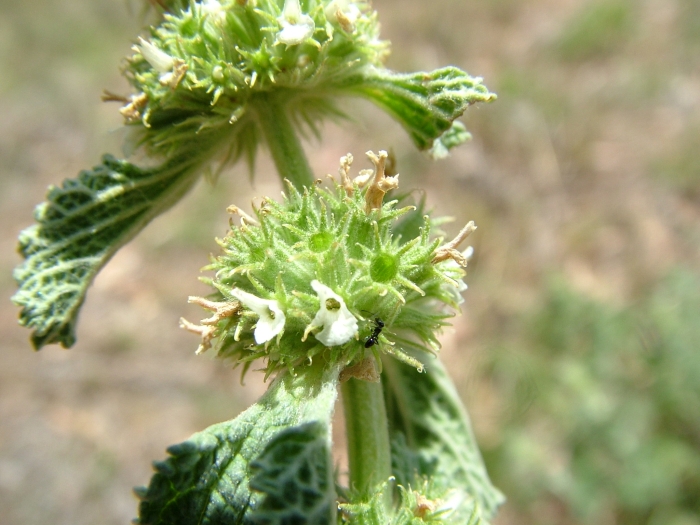White Horehound
(Marrubium vulgare)
White Horehound (Marrubium vulgare)
/
/

Harry Rose
CC BY 2.0
























































Estimated Native Range
Summary
White Horehound is valued for its medicinal properties, particularly as an ingredient in cough remedies and lozenges due to its expectorant qualities. It is also appreciated for its ornamental features, such as the textured leaves and the contrast between the foliage and the white flowers. In gardens, it is used for border planting, as a ground cover, and in herb gardens. White Horehound thrives in full sun and can tolerate a range of soil conditions, but prefers well-drained soils. It is drought-tolerant once established, making it suitable for xeriscaping. While generally low-maintenance, it can become invasive outside its native range, as seen in California, and should be planted with caution.CC BY-SA 4.0
Plant Description
- Plant Type: Subshrub, Herb
- Height: 2-3 feet
- Width: 1-1.5 feet
- Growth Rate: Moderate
- Flower Color: White
- Flowering Season: Summer
- Leaf Retention: Deciduous
Growth Requirements
- Sun: Full Sun
- Water: Low, Medium
- Drainage: Fast
Common Uses
Bank Stabilization, Bee Garden, Bird Garden, Butterfly Garden, Deer Resistant, Drought Tolerant, Edible*Disclaimer: Easyscape's listed plant edibility is for informational use. Always verify the safety and proper identification of any plant before consumption., Fragrant, Hummingbird Garden
Natural Habitat
Dry grasslands, rocky areas, and disturbed soils
Other Names
Common Names: Common Horehound, Horehound, Kransburre, Gewöhnlicher Andorn, Andorn, (Valko)Hurtanminttu, Marrube, Marrube Blanc, Marrube Commun, Borremynte
Scientific Names: , Marrubium vulgare, Marrubium album, Marrubium apulum, Marrubium vaillantii, Marrubium vulgare var. lanatum, Marrubium ballotoides, Marrubium propinquum, Marrubium hamatum, Marrubium vulgare var. vaillantii
GBIF Accepted Name: Marrubium vulgare L.